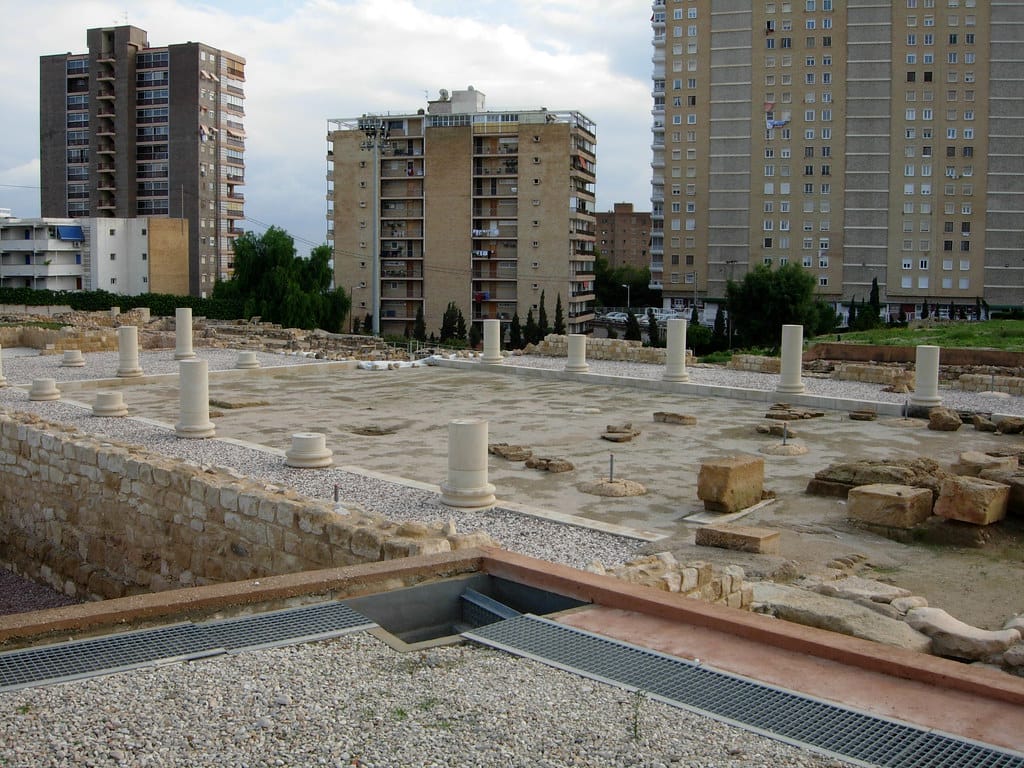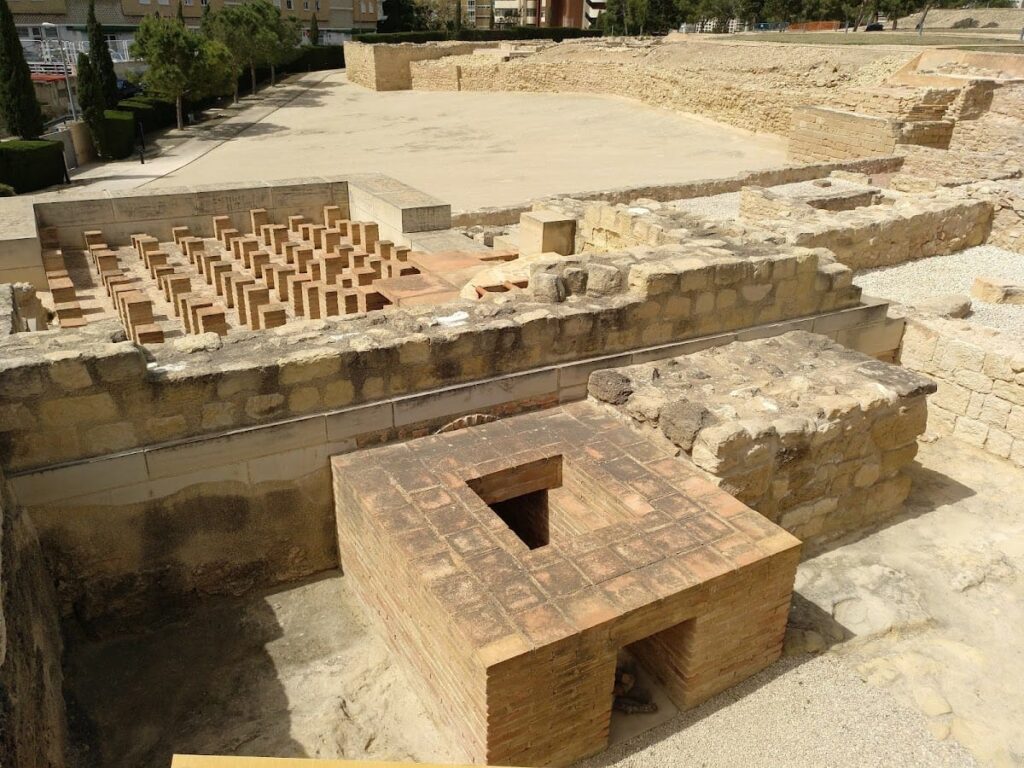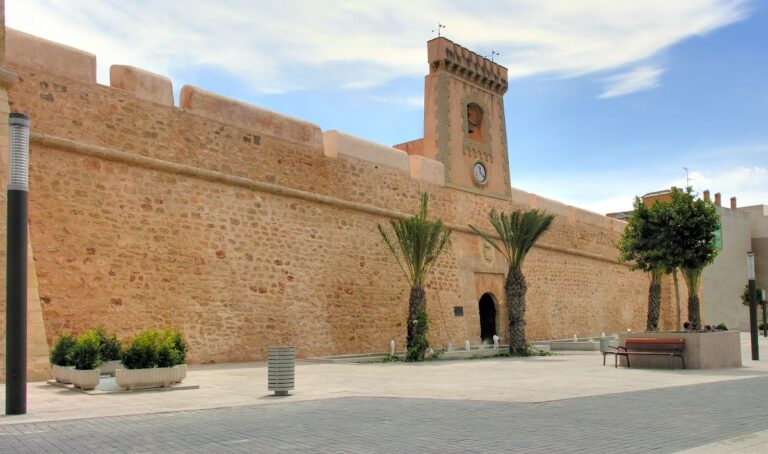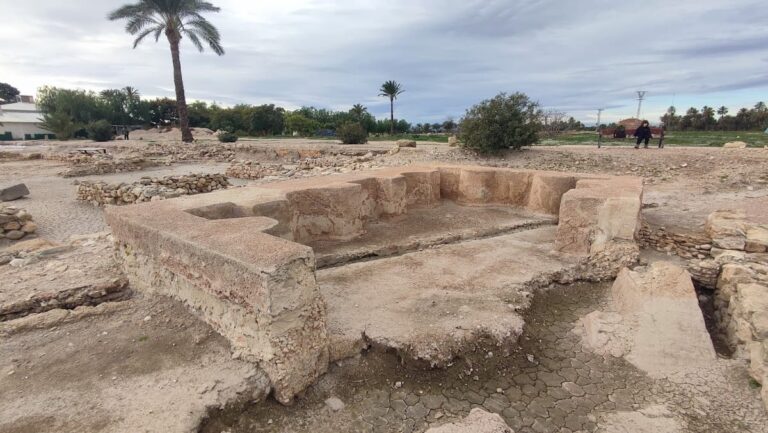Lucentum: An Ancient Iberian and Roman Settlement in Alicante, Spain
Visitor Information
Google Rating: 4.5
Popularity: Low
Google Maps: View on Google Maps
Official Website: www.marqalicante.com
Country: Spain
Civilization: Roman
Remains: City
History
Lucentum is an ancient settlement situated in the municipality of Alicante, Spain. Originally established by the Iberian Contestani people, the site developed from at least the 4th century BCE and later became a fortified urban center constructed by the Carthaginians.
Before Roman involvement, Lucentum was primarily an Iberian community engaged in trade and cultural exchange with Mediterranean civilizations such as the Greeks, Phoenicians, and Tartessians. In the late 3rd century BCE, during Carthaginian expansion in Iberia, the settlement was fortified, likely transforming into a military camp founded by the general Hamilcar Barca. Historical sources, including Diodorus and Livy, refer to this fortified site as “Acra Leuce” and “Castrum Album,” respectively.
The Carthaginian presence faced a decisive setback during the Second Punic War when the fortifications were destroyed and burned in 209 BCE. The site was subsequently abandoned throughout much of the 2nd century BCE but saw partial reconstruction during the early 1st century BCE amid the Sertorian War. During this period, Lucentum continued to serve a defensive purpose, maintaining its fortifications into the late Republican and early Imperial Roman eras.
Between roughly 30 and 20 BCE, Lucentum underwent significant urban development with the construction of its first Roman forum, indicating its establishment as a municipium—a self-governing city within the Roman administrative system. Urban growth and public works expanded into the early 1st century CE, marking the city’s peak period of prosperity and activity.
However, from the late 1st century CE under the reign of Emperor Vespasian, Lucentum began to decline. Key infrastructure such as the forum’s sewer system and the public baths known as Termes de Popili ceased to be maintained. This downturn intensified throughout the 2nd century CE, with archaeological evidence showing areas of deliberate dismantling and debris dumping, especially around the forum. By the 3rd century CE, Lucentum was fully abandoned, its formal status as a municipium dissolved, and its lands likely incorporated into the nearby Roman settlement of Ilici, now modern Elche.
Although the city was deserted in late Roman times, the site was not completely forgotten. During Islamic rule in the 10th and 11th centuries CE, a Muslim necropolis was established here, signifying intermittent use and adaptation of the area in the medieval period.
The location resurfaced in modern history when Antonio Valcárcel Pío de Saboya y Moura identified it as Lucentum in 1780. Subsequent archaeological excavations in the 1930s brought renewed attention, conducted by researchers such as José Lafuente Vidal and Francesc Figueras i Pacheco, later joined by Professor Belda. Despite threats from urban expansion in the mid-20th century, archaeologist Solveig Nordström’s intervention safeguarded the site. Official recognition came in 1961 when it was declared a historic-artistic monument. After periods of neglect and looting, restoration efforts in the 1990s under architect Rafael Pérez Jiménez and archaeologist Manuel Olcina Doménech led to important conservation achievements and greater understanding of the site’s heritage.
Remains
Lucentum covers approximately 30,000 square meters atop the Tossal de Manises hill, commanding strategic views over the ancient lagoon known as the Albufera, adjacent hills, and the nearby coastline. The settlement’s layout reveals a blend of Iberian, Carthaginian, and Roman urban planning, surrounded by substantial defensive walls. Remnants of these fortifications include the stone foundations of pre-Roman towers constructed during the Punic period, integrated within the overall defensive circuit.
Within the Roman framework of the city, excavations have unearthed the remains of the forum, the civic and ceremonial center, constructed around the turn of the 1st century BCE. Alongside the forum, the Termes de Popili, public thermal baths, illustrate the adoption of typical Roman leisure and hygiene facilities. A sewer system linked to these structures demonstrates advanced urban infrastructure, although maintenance of this network apparently ceased in the late 1st century CE, reflecting the city’s gradual decline.
Residential areas reveal numerous houses, evidencing a densely inhabited urban environment. Archaeologists continue to uncover extensions of this domestic quarter, which provide insight into the city’s layout and the daily lives of its inhabitants.
Later reuse of the site is marked by a Muslim necropolis dating from the 10th to 11th centuries CE, revealing a new layer of occupation centuries after the Roman abandonment. This cemetery occupies part of the archaeological zone and offers evidence of local Islamic practices during the Middle Ages.
Material culture recovered from Lucentum is diverse and rich. Ceramic fragments display both geometric and figurative decoration, including distinctive Iberian pieces such as the “vaso de los jinetes,” a vase depicting horsemen. The site also produced unusual incense burners known as pebeteros, sculptural fragments, and jewelry, notably three earrings found in specific tombs that suggest the existence of a local workshop. Additional finds include glass paste necklaces, amulets of Egyptian origin, terracotta pottery, spindle whorls for textile production, and weapons, all highlighting the cultural interactions and craftsmanship present in the city.
A remarkable artifact associated with Lucentum is the “Kore of Alicante,” a sculpture now housed in the Archaeological Museum of Catalonia. While its exact provenance is linked to the area, it exemplifies the artistic influence reaching this part of the Iberian Peninsula.
The earliest layers of the site correspond to the original Iberian settlement, contemporaneous with a nearby necropolis uncovered during road construction in the 1930s. Artifacts from this burial ground are preserved in the Provincial Archaeological Museum of Alicante, further enriching the historical narrative of the area.
Today, Lucentum remains protected and accessible under the management of the Diputación de Alicante through the MARQ museum system. Although enclosed by modern high-rise buildings that obscure its ancient setting, ongoing archaeological work continues to expand knowledge of the site’s extent and significance.










